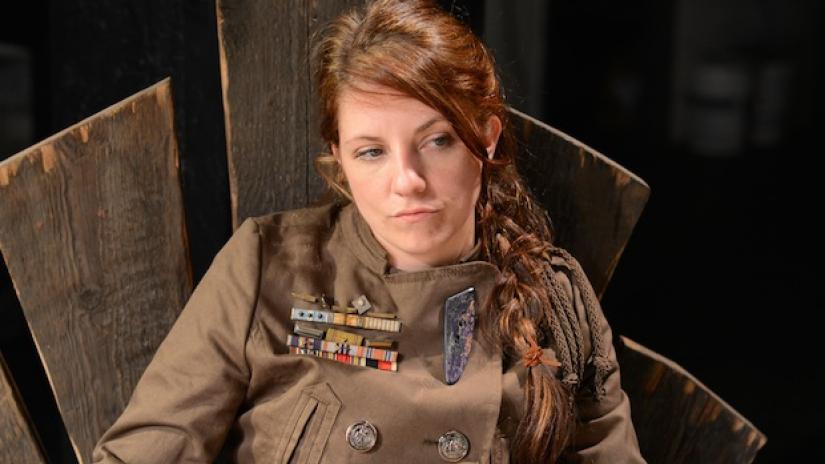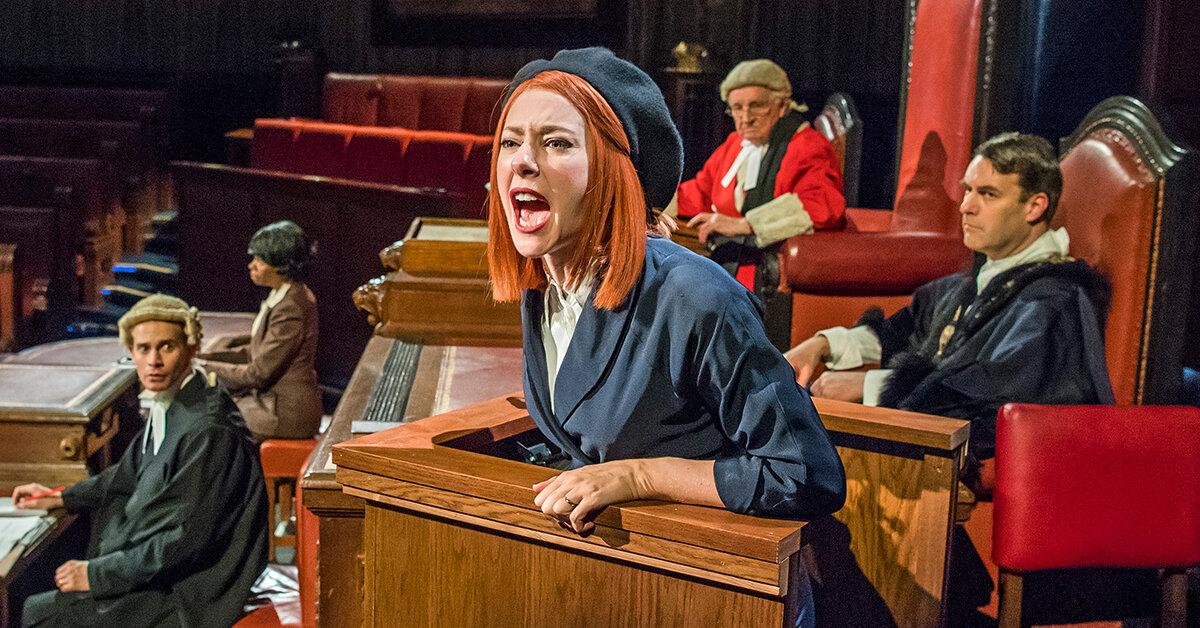
When you think of American epics, great works like Father Comes Home From the Wars, Part 1, 2 & 3, Our Town, The Coast of Utopia, and Angels in America might come to mind. Plays of this sort usually carry with them a reputation for grandiosity, somehow enabling sweeping settings, huge casts, and big themes to be contained onstage, within a single evening. So, what does an epic look like in 2017? If you are Mac Rogers, it’s all this and more, adding an ingredient much-neglected in the American theatre canon: science fiction.
I’ve always been intrigued by the genre myself and curious as to why our sci-fi-obsessed movie and TV culture hasn’t spilled over more into theatre. It was this hook that led me to marathon all three plays of The Honeycomb Trilogy (Part One, Part Two and Part Three) at Judson’s Memorial Church during the winter of 2015. As we sat in the theater from early afternoon until well into the darkness of the evening, I became consumed by what Rogers had created, even weeping at crucial moments. “I’m weeping at a sci-fi play,” I thought. These plays are unbelievably affecting.
And while many dismiss sci-fi as being in a class below other forms of drama, Rogers finds no easy distinction. “I find in the entertainment versus art debate, it’s really not useful to think of those as opposites; entertainment is a delivery system for art.”
The idea to write sci-fi plays emerged for Rogers after one particularly terrible encounter with an early play he had written and produced in New York. “The first play of mine I did was put together with some college friends and we were destroyed. The play was three hours long, and it was mostly direct address monologues, and I was also in it, and every night I would have to look out into the five people in the audience and see how bored they were.”
Some time later, Rogers realized what had gone wrong: “The hard lesson was that I wouldn’t have gone to see that. And then I thought it’s crazy for me to be writing plays that I wouldn’t attend. So then I reasoned, well, what do I like? I like sci-fi, I like horror, I like thrillers, I like dark comedies. Why should I be making plays that are not the things I consume?”
After a few successful forays into the genre, like Hail Satan and the NYC Fringe hit Viral, Rogers and his fellow producers from Gideon Productions got together to discuss what their next project would be.
“I had a list of ideas. The first idea I had was a trilogy of plays about an alien invasion of earth – and I thought, there’s no way we can do this now. We’ll do it ten years. But I never got to the next idea on the list.”
He credits his team, and Sean Williams in particular, with pushing the idea forward: “Sean is really good at getting us to take leaps. We wouldn’t have done anything if Sean hadn’t been completely and utterly fearless. When we were talking about it, he started changing the verb tense description of it from how it would work to how it will work, and by shifting the language, he essentially forged a new reality.”
Forward they marched, and together the team was able to accomplish what many New York producers perceive as impossible: the presentation of three plays in repertory with a cast of over twenty actors. In its development and production, such an endeavor caused obvious challenges, but Rogers continuously credits his production team for pushing the work to its truest potential, constantly directing him to refine what he had written. “What saved my bacon,” he says, “was that I was surrounded by a lot of people who were a lot more curious about world building than me because they needed to be in order to do their jobs.”
One particularly memorable moment of collaboration occurred with his wife, Sandy, who was also the team’s set designer. “I was sitting in bed writing. Sandy is sitting in bed working on the set. She said to me, they talk a lot about the 51 [a group of people who play an integral part of Sovereign, the last of the plays in the trilogy, even though they are never seen]. She said, I want to have a wall with the characters’ names on it so they can touch them whenever they want. And I was like, oh my god, that is SO GOOD! It made the script come alive. It’s really deadly to have a play in a single set with characters we never see.”
And while it can be challenging, and all three plays do not need to be presented together, Rogers says the rewards of producing the trilogy outweigh the risks, as he reaffirms his belief in theatrical collaboration to potential producers: “Make sure your ducks are in a row, big time,” he says, “Resources in place, the money, space, materials, sure, but even more than that you really need to put together a group of people that you are going to go through some bad times with, friendships that are not easily sundered by adversity. Essentially, people you’d go on a submarine with.”
Or, perhaps, people you might band together with during an alien invasion.

Heathers The Musical: 10 Facts for 10 Years

Agatha Christie’s Witness for the Prosecution: Meet the Characters

